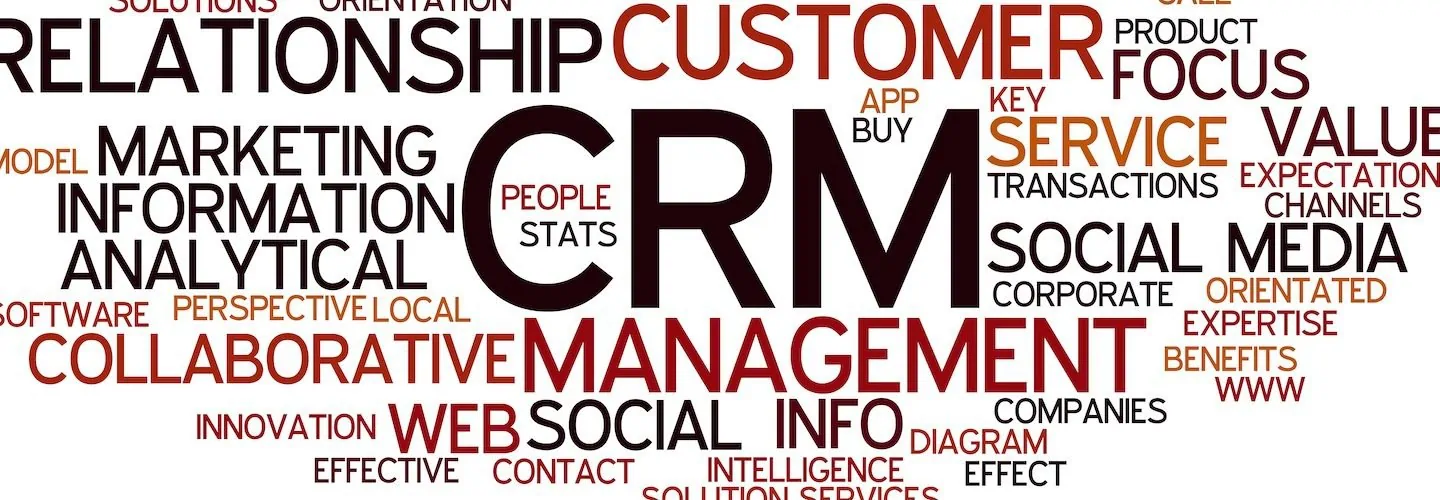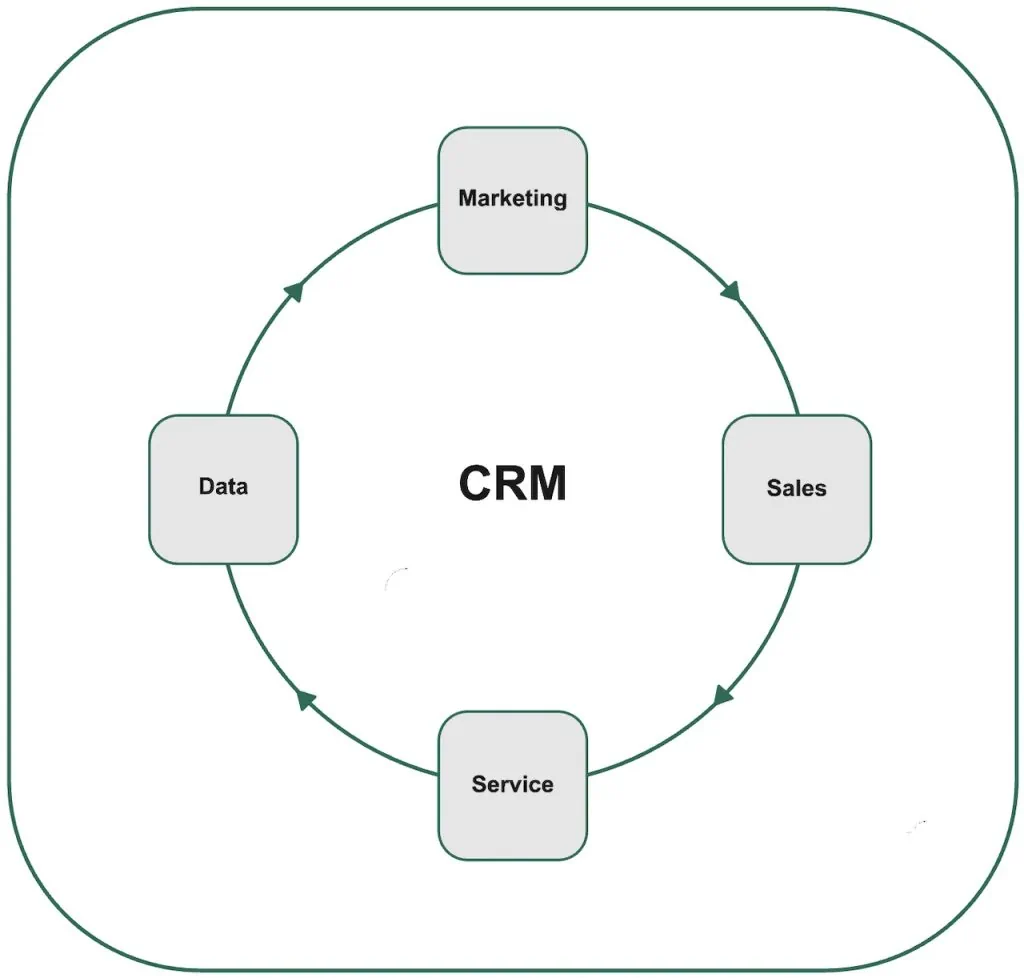

What does CRM stand for?
The abbreviation CRM stands for “customer relationship management,” a phrase that clearly describes what the decipline is all about. CRM is the thinking and the strategy that surrounds developing relatonships with the customer.
CRM is the strategic approach to optimizing a company’s relationships with both existing and potential customers throughout the customer lifecycle. Its purpose is to achieve the most lucrative and long-term customer relationships possible. This, therefore, requires a consistent focus on customers and the methodical development of internal processes.
What is a CRM system?
A CRM system stores and structures customer communication and data so that it can be used by many departments — such as sales, marketing, and support — to optimize business relationships. It is designed to track customer interactions throughout the customer lifecycle, from the time when a lead enters the funnel through the time when a contract closes and throughout the entire time the customer is using the product or service.
Why is CRM important?
CRM is about developing the best possible relationships with the company’s customers. It is about establishing, expanding and maintaining them by understanding what customers need and helping them achieve this.
CRM offers the following benefits to the company and customers:
- Better service for the customer and thus higher customer satisfaction
- Increase customer engagement and retention
- Increased productivity
- Collaboration across teams and departments
- Support for sales, marketing and product planning
- Decision-ready reporting
Central management and display of relevant data and information, to which every employee involved has access, is crucial for all of this. This includes, for example, a customer’s history with the company and his orders or inquiries. It also requires tracking of processes, consistent documentation of customer interactions, transparency between teams and rapid response to customers.
Customer service is one of the most important factors for business success, because support is no longer just a problem solver, but a supporting pillar when it comes to increasing customer satisfaction and retaining customers in the long term.
Cross-Functional collaboration is required for CMR success
CRM can be used in various areas of a company when it comes to maintaining customer relationships. Be it in sales, in the creation of marketing concepts or, of course, in customer service, including complaint management.
CRM in marketing
Marketing departments can use CRM to gain insights from the available data and information, on the basis of which more targeted activities can be derived. This makes campaigns more efficient.
The marketing role is traditionally thought of at the beginning of the customer lifecycle, when the customer is exploring their options. By using CRM practices, marketing also steps back in post-sale to help:
- communicate product information,
- establish loyalty programs,
- design after-sale promotions or up-selling opportunities and
- encourage reviews or referrals.
CRM in sales
What is a lead in CRM?
When talking about CRM in marketing, the terms “lead” or “prospect” often come up. In CRM, a lead means that the person has somehow interacted with marketing content, such as visited the website and filled out a form or signed up for the newsletter. The potential customer has made contact with the business. A CRM system would start to capture customer history at this point.
What is a prospect in CRM?
A prospect has already expressed a concrete interest in an offer or product and is therefore already one step further into the funnel than a lead. This is important information that is recorded in a CRM system and can significantly increase the chance of success for a sale. Now, the customer begins interacting with the sales team.
At this point, the sales team takes responsibility for the customer relationship. They will spend time qualifying the prospect and making sure the product or service is a good fit. They will work through demos and presentations, handling customer questions and addressing any objection that the customer might have. Finally, they present a proposal and, with a positive agreement from the prospect, a new customer has been earned.
Sales may have further involvement in the relationship as the customer is initially onboarded and at specific compelling events throughout the customer lifecycle.
CRM in customer service
This area of the company is the one that has the most direct, immediate contact when we talk about a relationship with external customers after a sale. Handling complaints, claims, and confusion are of immense importance in a customer journey and are key for ensuring a positive customer experience.
As customer needs change rapidly these days, it is becoming increasingly difficult to differentiate oneself and hold one’s own in the market. As a result, there has long been a greater focus on customer service and their role in ensuring a positive customer experience.
Support is no longer just a “problem solver”, but a supporting pillar when it comes to increasing customer satisfaction and retaining customers in the long term. In fact, according to a recent survey of 500 global customer service leaders, customer service teams now have partical responsibility for key CRM metrics.

The CRM strategy, mindset and culture
Successful CRM starts with strategy. Only from a strategic orientation that’s clearly defined by management can goals be set and the activities that are necessary to achieve them be determined.
A CRM strategy should involve fully mapping and understanding the customer lifecycle in order to impress upon teams that the customer relationship is not over after the initial contact or even after a contract conclusion. Potential customers or even existing customers are much more likely to turn to other companies if you do not maintain long-term contact.
The relevance of people and corporate culture in CRM
In addition strategy, the successful introduction of CRM naturally depends on the players themselves, i.e., the employees and management. This includes a promoting shared ability to work under pressure, a sense of responsibility, empathy and, of course, the appropriate know-how.
Not to be neglected is the corporate culture, which can significantly determine how successful CRM will be. After all, within a defined culture, values are conveyed and ideally exemplified that often form the basis for successful relationships, i.e., also customer relationships.
For example, a culture that allows mistakes or promotes entrepreneurial thinking will empower employees to make decisions independently and take responsibility. Service employees will usually be grateful for not having to ask their supervisor about every issue.
The customer will thank you, because his or her concern will be resolved more quickly.
What are CRM Metrics?
As the strategy is implemented, it’s important to measure how teams are performing, which means establishing metrics. Selected metrics should tie back to the business goals, so they may vary from organization to organization. Commonly used CRM metrics include:
• Customer retion rate
• Customer churn / customer loss rate
• Net promoter score
• Renewal rate
• Customer engagement
Implementing CRM
If you have decided to introduce CRM practices in your company or to intensify existing approaches, consistency, openness and a hands-on mentality will help. There is a lot that needs to be done and simply “tackled”.
Understand the customer lifecycle
Documenting and understanding the phases that a customer goes through during their engagement with your company are key. This helps to get a big picture of which touchpoints exist, which are beneficial or need improvement and where there are gaps.
Improve customer service
Enable the customer service team to provide faster and more helpful support through the use of customer service software. This tool lets customers reach out with questions through many different support channels. The service team receives the request and instantly has all of the related customer information – like their equipment, location and interaction history – at their fingertips. Solving the request is supported through the use of FAQs, templates and forms so that everyone gets the right information quickly. And, it gives management a chance to measure how well customers are being served.
Evaluate internal processes
Use your customer lifecycle map to evaluate your internal processes. Be sure that the customer is getting the right amount of help when needed. Confirm that teams are communicating what’s happening with the products, services or solutions in a timely way. Determine if customers are engaging with your offerings. As you go through this process, consider ways in which business processes can be automated to provide better customer support and improve efficiency.
Get your employees on board
You cannot achieve your goals if all employees do not pull together. People accept innovations in very different ways. By no means does everyone think first about the long-term benefits, see change as an opportunity or think entrepreneurially. And, that’s perfectly fine. Yet you need everyone on board.
Therefore, take an individual approach, show understanding for different points of view. Training offers, courses or the support of employees who are more open to change can also help.
And: Communicate your plans in good time, openly and transparently.
If you’re interested in learning how service management solutions can support your CRM efforts, contact OTRS Group experts.
Categories
- About OTRS Group (21)
- Automation (3)
- Corporate Security (26)
- Customer Service (30)
- Developing a Corporate Culture (12)
- Digital Transformation (54)
- General (86)
- ITSM (36)
- Leadership (22)
- OTRS in Action (8)
- Processes (5)
- Using OTRS (15)
